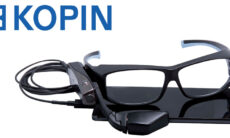With the pandemic affecting travel and in-person meetings, two firms joined hands to bring surgeon training into the future through virtual reality. Catalyst OrthoScience Inc. is a medical device venture and operating in the upper extremity orthopedics market. They provided a training lab for surgeons across the nation through Immertec’s VR platform Medoptic.
Catalyst OrthoScience hosted a digital symposium with renowned shoulder surgeons as faculty, and the VR lab was a part of this. The list of surgeons included J. Michael Wiater, a Program Director at Oakland University William Beaumont School of Medicine. Wiater is also a Professor of Orthopedic Surgery. The other prominent figures were William N. Levine and Anand Murthi. The faculty guided the attendees through panel discussions and presentations on a web-based platform before shifting to a VR-based surgical lab setting to showcase the surgical process.
Unique Paradigm
The Catalyst chairman and CEO, Brian Hutchison, said that with the help of the Catalyst CSR Total Shoulder System, they created a unique paradigm for stemless shoulder arthroplasty. The system provides innovative and anatomic implants, streamlined instrumentation in one tray, as well as tissue-sparing and bone-preserving technique. When surgeons see the Catalyst CSR Total Shoulder System in surgery, they become clear about its benefits for their patients.
Cutting- edge
Hutchison then talked about using Immertec’s virtual reality platform and described it as a cutting-edge way to present their latest technology to these surgeons. Participants entered the surgical lab through virtual reality headsets. It gave them the chance to be with the faculty. Participants were able to access several camera angles and views of the process. The attendees could witness the Catalyst CSR system’s benefits in a whole shoulder arthroplasty method.
Next best thing
Dr. Levine talked about the necessity of ongoing surgeon education and that during this phase of restricted travel, digital technologies have facilitated them to bring surgeons together. Dr. Wiater portrayed the Immertec VR surgical learning lab as the next best thing. He said that surgeons can see the surgery live in 3D, discuss with the surgeon, and also ask questions in real-time. Various screens let the surgeon see the surgery up close or from a distance to view the retractor placement. The other windows that can be magnified and shifted around display an animated technique video loop as well as the instrument tray.
Dr. Murthi emphasized that during this period of a pandemic and travel bans, education must go on. Through Immertec technology surgeons can ‘visit’ the operating room and become a part of the surgical process. They can engage in real-time discussions and conversations. Murthi also illustrated the system as the next best thing.
Wherever they are
David Puckett, the PA-C, and director of Catalyst’s medical education said that with the help of the latest technology, they are able to access an excellent surgeon faculty and bring them in a common place together. This technology has allowed them to bring their symposium to their surgeon customers wherever they are. Their participants joined the event from their offices, homes, and they also had an attendee who was relaxing poolside while using his virtual reality headset.










